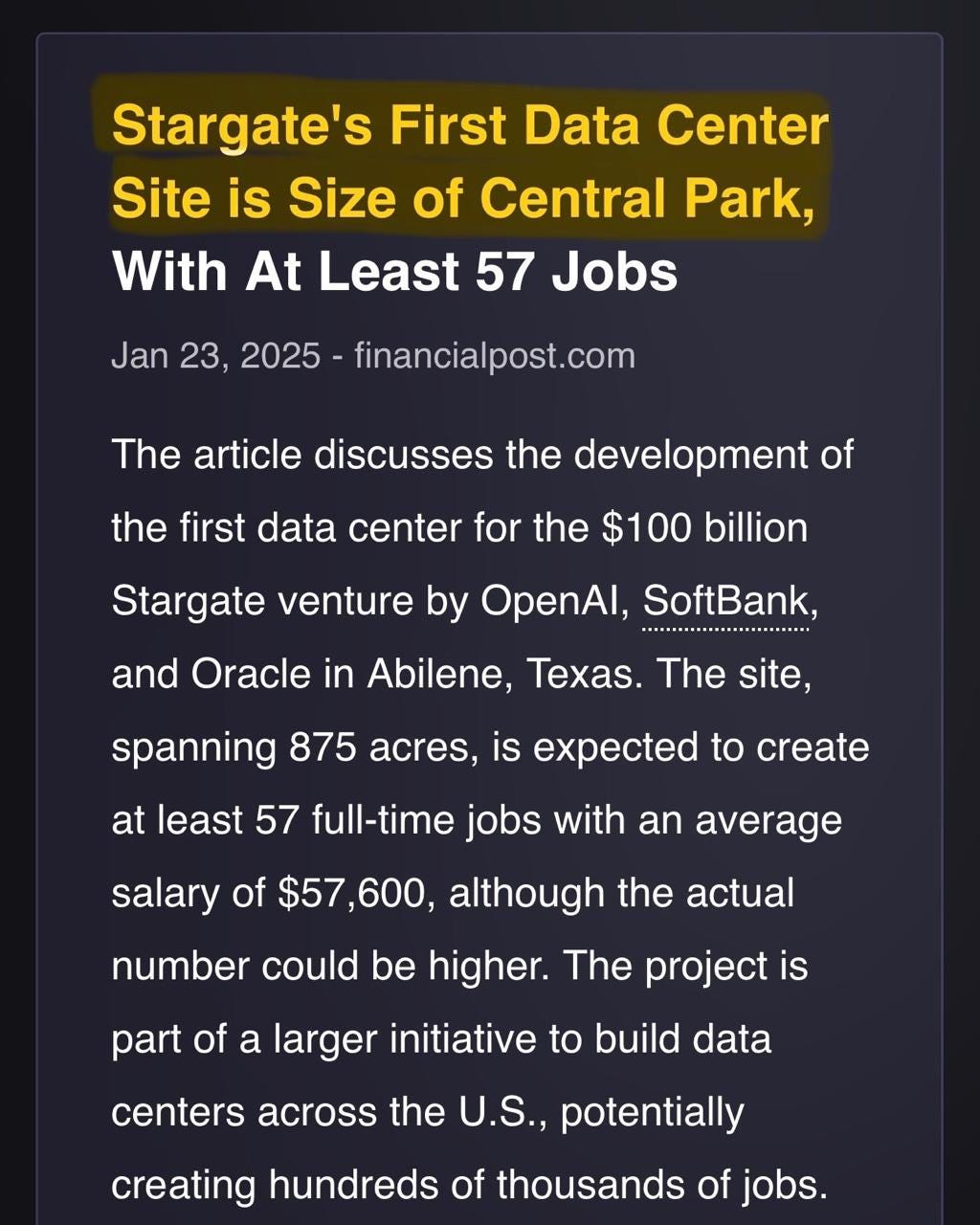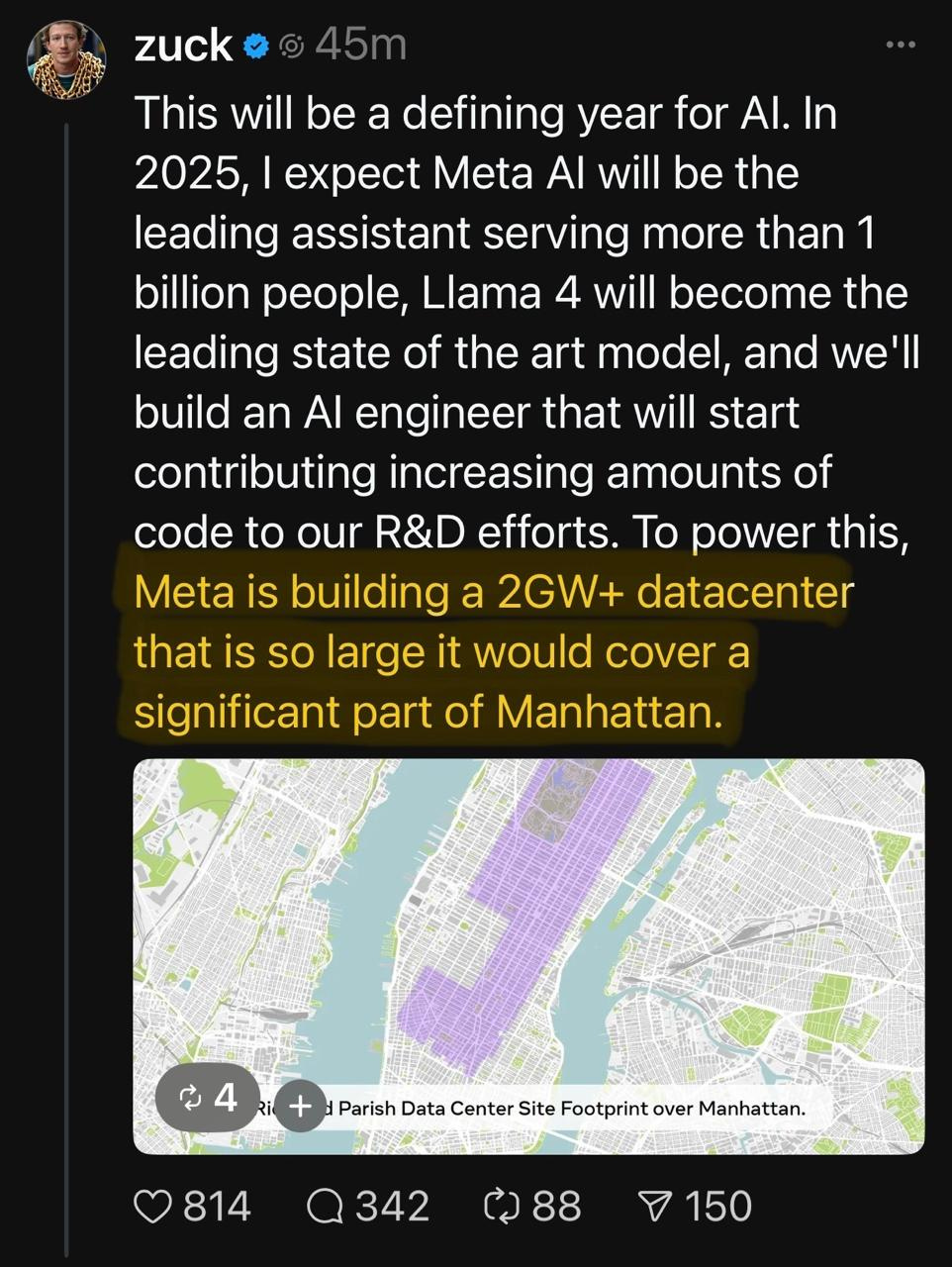Big, Bigger, Biggest: The Global Race to AI Data Centre Supremacy
Stargate, Meta, and Reliance Industries Lead the Charge in Building the World's Most Powerful AI Data Centers.
The Race for AI Dominance: A New Era of Global Data Centers
The global race to dominate artificial intelligence (AI) infrastructure is heating up, with tech giants and billionaire entrepreneurs unveiling staggering investments in data centers. These state-of-the-art facilities, powered by the latest semiconductors GPUs and renewable energy, promise to unlock unprecedented AI capabilities. While the United States sees ambitious projects like Donald Trump’s Stargate initiative and Meta’s record-breaking expenditures, India’s Mukesh Ambani has thrown his hat in the ring with plans for the world's largest data center in Jamnagar, Gujarat. The pressing question remains: Where will India’s funds flow—to Nvidia and AI infrastructure or elsewhere? And what will be the environmental and energy implications of such massive projects?
Global Announcements: Stargate and Meta's AI Push
The United States is cementing its leadership in AI with two monumental announcements:
Stargate Project
The Stargate Project is a $500 billion joint venture announced on January 21, 2025, by President Donald Trump, in collaboration with OpenAI, SoftBank, Oracle, and other partners. The initiative aims to develop advanced AI infrastructure across multiple sites in the United States, with an initial focus on a data center in Abilene, Texas. The project begins with a $100 billion investment, with plans to scale up to $500 billion over the next four years. SoftBank's CEO, Masayoshi Son, will serve as the venture's chairman.
The first facility is under construction in Abilene, Texas. While specific details about the size of the data center have not been disclosed, it is known that the site spans approximately 800 acres, of the size of New York’s Central Park. The Stargate Project represents a significant technological advancement, integrating expertise from global partners to strengthen American leadership in AI. The initiative is expected to create over 100,000 jobs and enhance the nation's competitiveness in the rapidly evolving AI industry.
Meta’s AI Vision
Meta, led by Mark Zuckerberg, is set to invest an unprecedented $60–65 billion in AI infrastructure in 2025 alone. This massive capital allocation is aimed at deploying over 1.3 million GPUs and constructing a 2GW+ data center, a facility so expansive that, as Zuckerberg noted on Threads—Meta's competitor to X—it "would cover a significant part of Manhattan."
Zuckerberg has positioned this investment as a cornerstone of American technological leadership, emphasizing its transformative potential. "This effort will unlock historic innovation and drive our core business for years to come," he stated, highlighting Meta's commitment to staying at the forefront of AI development.
India’s Answer: Mukesh Ambani's Jamnagar Mega Project
Closer to home, Mukesh Ambani has now announced plans to build the world’s largest data center by capacity in Jamnagar, Gujarat. Key details of the project include:
Capacity: Targeting a massive 3GW, tripling India’s current data center capacity.
Investment: Estimated between $20 billion and $30 billion.
Technology: Powered by Nvidia’s advanced AI chips.
Energy Source: Primarily renewable, leveraging solar and wind to align with global sustainability goals.
Vision: Democratising AI and making advanced applications affordable, as highlighted by Ambani at Reliance’s 47th annual general meeting.
This ambitious initiative not only positions India as a major player in AI infrastructure but also complements the country’s digital aspirations. However, it raises critical questions about funding priorities and energy sustainability.
Power Consumption: A Looming Challenge
The sheer scale of these data centers brings energy consumption into sharp focus. Meta’s Manhattan-scale facility alone is expected to demand over 1GW of power, comparable to the energy requirements of small countries. Similarly, Ambani’s Jamnagar project, with a 3GW target, will redefine power dynamics in India. While renewable energy offers a sustainable path, the infrastructure and resources required to meet these demands present significant challenges.
India’s Strategic Dilemma: Where Will the Funds Go?
As global players race ahead, the key question for India is strategic: How should resources be allocated? Will Mukesh Ambani’s mega project attract substantial investment, or will companies like Nvidia become the primary beneficiaries of India’s AI push? The stakes are high, with billions in potential economic and technological gains.
For India, balancing innovation, economic growth, and environmental impact will be critical. As the country seeks to assert itself in the AI landscape, the decisions made today will shape the contours of its future in this high-stakes global competition.
The global AI infrastructure race is not just about building bigger data centers; it’s about defining the technological and economic leadership of tomorrow. While the U.S. and China have surged ahead, Mukesh Ambani’s vision offers India a golden opportunity to rise as a global contender. The only question is: Will we seize it?






